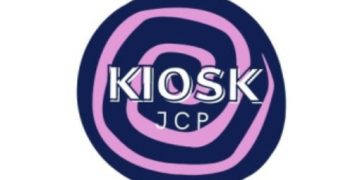Having to pay for higher education can be difficult, and a student loan can help ease the financial burden. However, the government also provides subsidies to make college less expensive, and this makes it more difficult to pay back a student loan.
Federal student loans are a student’s first choice for financial aid
Getting a student loan is a great way to help cover the cost of your education. These loans offer flexible repayment options and low fixed interest rates. They are available to students through private lenders and the federal government.
Before you make a decision on which type of student loan is best for you, it’s important to understand how they work. The federal government offers four main types of federal student loans, each with its own benefits and limitations. There are also several state-sponsored programs.
Federal loans, in particular, have benefits, like lower interest rates and flexible repayment options. They also come with more protections than other types of loans.
Government subsidies make college less affordable
Despite the federal government’s claim that “the cost of education is increasing,” there is a clear correlation between the influx of government subsidies and the rising price of college. The higher costs jeopardize the future of students, their families, and entire communities.
The cost of a four-year public college has increased faster than the average income. In fact, the price of an average four-year public college has increased 213 percent over the past two decades.
There is an increasing number of studies and reports that show the correlation between increased federal aid and tuition. This includes a study that analyzed student loan debt. It found that for every dollar of federal aid, tuition went up about 65 cents.
Smart option student loans are for students at non-degree-granting schools
Whether you’re attending a degree-granting institution or a non-degree-granting school, a Sallie Mae Smart Option Student Loan may be the right option for you. These loans are designed to supplement scholarships and federal student loans. They also offer flexible repayment options.
There are a variety of repayment plans, including interest-only payments and deferred payments while you’re in school. Students can get a 0.25 percentage point interest rate reduction with in-school repayment. Those who choose to defer payment will have a three-month grace period, during which they won’t have any payments.
While a borrower’s eligibility criteria will depend on their current credit history, most borrowers should look for a loan with a good grace period and a low interest rate. Lenders will evaluate your credit score, income, and repayment ability.
NY HESC is the student loan guarantor for New York State
Among the financial aid programs offered by the state of New York is the Tuition Assistance Program. The TAP offers a statewide grant of up to $5,665 to help eligible New York residents pay for undergraduate tuition at New York State colleges and universities. The award is based on need, not merit.
The TAP is just one of the many student aid programs administered by the New York State Higher Education Services Corporation (NYSHEC). They also administer the Direct Loan and Grad Plus loans. They offer a variety of on-line services and information, including a HESC Hotline. Applicants must have a high school diploma or equivalent to apply.
Sallie Mae loans have a Graduated Repayment Period
Whether you are a first-time borrower or you are already a Sallie Mae customer, there are a few things you need to know about the Graduated Repayment Period. The plan is available for loans that are used to pay qualified higher education expenses at a degree-granting institution.
The plan is not an automatic option, but it can be a good option if you need to make lower payments while you are in school. The plan starts out low and increases in monthly payments over the course of a few years. If you expect to make more money in the future, the graduated repayment plan might be the right choice for you.
Students with smaller amounts of debt have a harder time repaying their loans
Almost every analyst believes there is a problem with student debt in the U.S. However, the extent of the problem is unclear. Several groups are conducting research to find out how much student debt is affecting the nation’s economy.
One research organization, the Pew Research Center, estimates that the total amount of consumer loans in the U.S. is now larger than credit card debt. The federal government also has more than $1 trillion in outstanding student loan debt. In fact, student debt has surpassed auto loans as the most significant form of consumer borrowing in the United States.
The combination of high tuition costs and deep cuts in state funding has affected millennials especially. This has led many families to turn to federal aid and private loans to pay for their children’s education.




















































